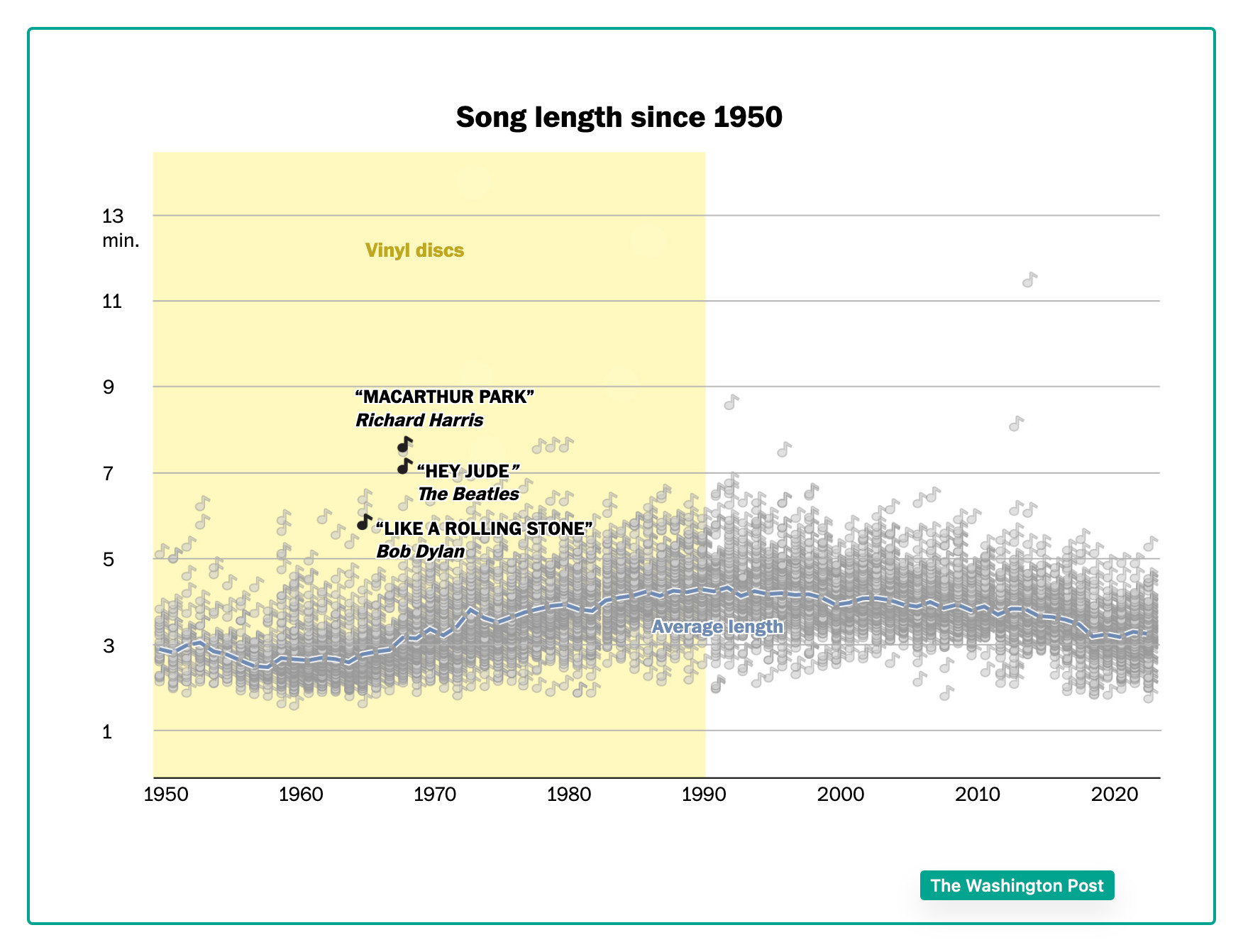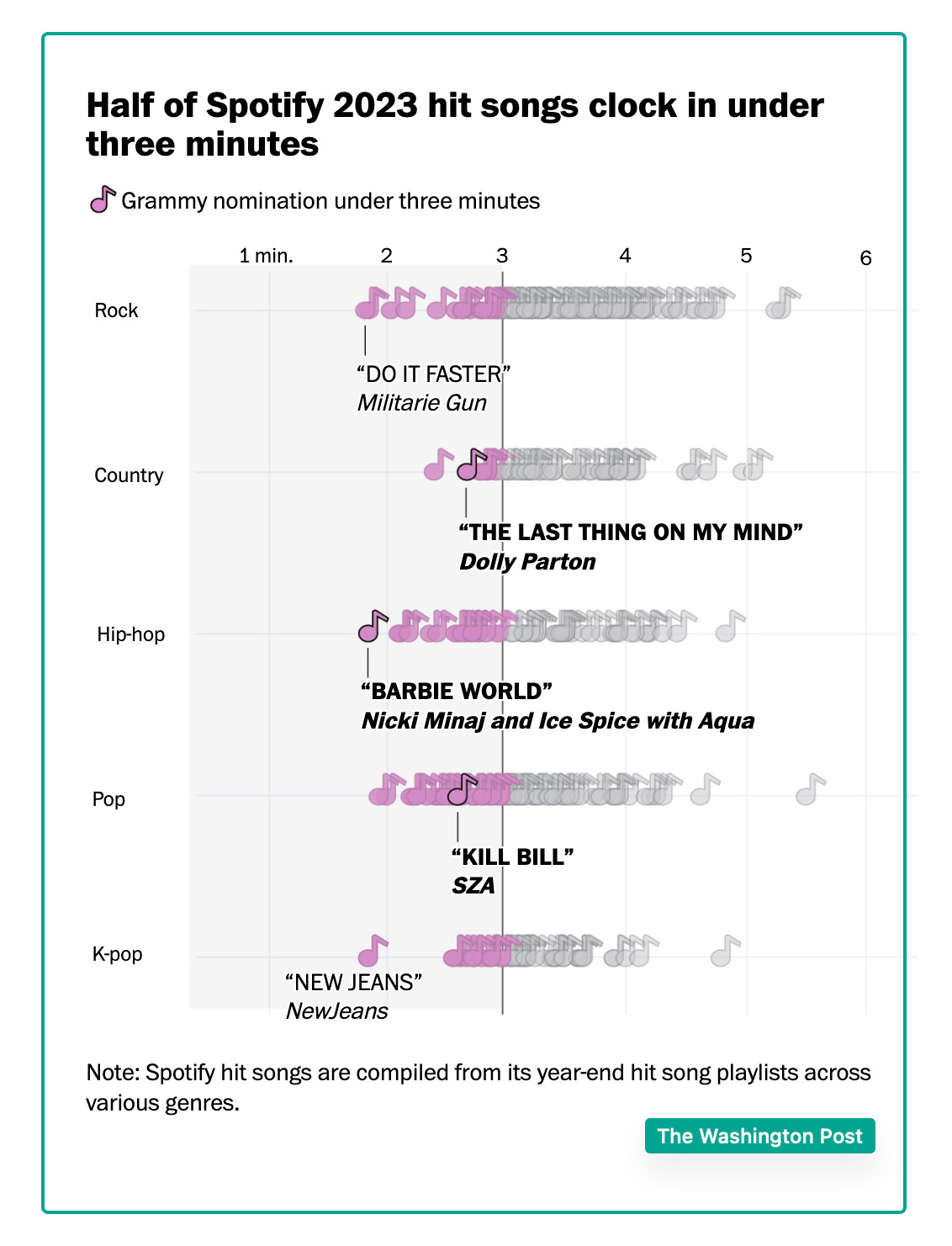The Beatles’ iconic “Hey Jude” stretched to an impressive seven minutes, a testament to their artistic freedom and commercial appeal that defied the norms of radio and music tradition at the time. You can see The Beatles perform “Hey Jude” in this video, with the song starting at the 50-second mark:
[Link to Beatles “Hey Jude” video]
Average Song Length in the Modern Era
Fast forward to the 2024 Grammy Awards, and a striking 28 out of 144 nominated songs clocked in at under three minutes. This trend towards brevity is further highlighted by comparing Average Song Lengths across decades. In the 1990s, the average song duration was approximately four minutes and 14 seconds. However, the 2020s have seen this average decrease to around three minutes and 15 seconds.
Several factors contribute to this shift in average song length, with technology playing a pivotal role. In the era of vinyl records during the 1960s, sound quality was optimally maintained for about five minutes per side. This technological constraint, combined with the programming preferences of radio DJs, contributed to the ideal song length hovering around three and a half minutes. Even in 1956, Elvis Presley’s “Hound Dog” adhered to this shorter format, lasting just two minutes and 14 seconds.
 Historical chart demonstrating the trend of decreasing average song length over time
Historical chart demonstrating the trend of decreasing average song length over time
As music technology evolved from tapes and CDs to digital formats, artists gained greater flexibility in song length. Today, streaming platforms exert a significant influence on song duration through their revenue models. Since artists often need a minimum play time, often around thirty seconds, to generate revenue, there is a financial incentive to quickly capture listener attention right from the song’s beginning. Furthermore, shorter songs encourage more replays, boosting streaming numbers and consequently, artist revenue. This contrasts sharply with platforms like TikTok, where even shorter attention spans are the norm, questioning the viability of longer content.
Echoing this brevity, Lil Yachty’s track “Poland” lasts a mere 83 seconds, and a significant portion of Spotify’s most popular songs fall under the three-minute mark.
 Examples of popular shorter songs reflecting current average song length trends in music streaming
Examples of popular shorter songs reflecting current average song length trends in music streaming
The Economic Principle of Marginal Utility and Song Length
From an economic perspective, the prevalence of shorter song tracks can be analyzed through the concept of marginal utility. Marginal utility, in economics, refers to the additional satisfaction or usefulness derived from consuming one more unit of something. In this context, shorter songs can potentially generate greater marginal utility for both music creators and listeners.
On the supply side, shorter tracks can lead to increased streaming revenue, pushing beyond existing profit margins. Simultaneously, on the demand side, listeners appear to favor the conciseness of shorter songs, possibly reflecting shorter attention spans and a preference for immediate musical “hooks.” This shift suggests a recalibration of musical consumption habits, moving away from the extended song lengths that were once standard.
 Examples of popular shorter songs reflecting current average song length trends in music streaming
Examples of popular shorter songs reflecting current average song length trends in music streaming
Ultimately, the average song length, like many aspects of the music industry, is shaped by economic tradeoffs. At the margin, the cost—what is sacrificed—is constantly being evaluated. This economic dimension remains a crucial factor in understanding the evolving landscape of music creation and consumption.
Sources: Information for this article was gathered from a Washington Post podcast and article discussing the trend of shortening song lengths.

